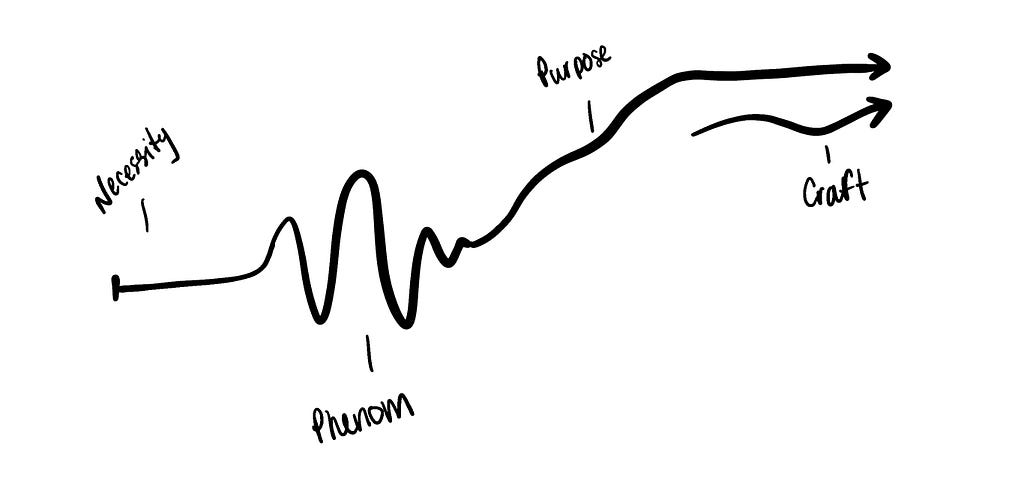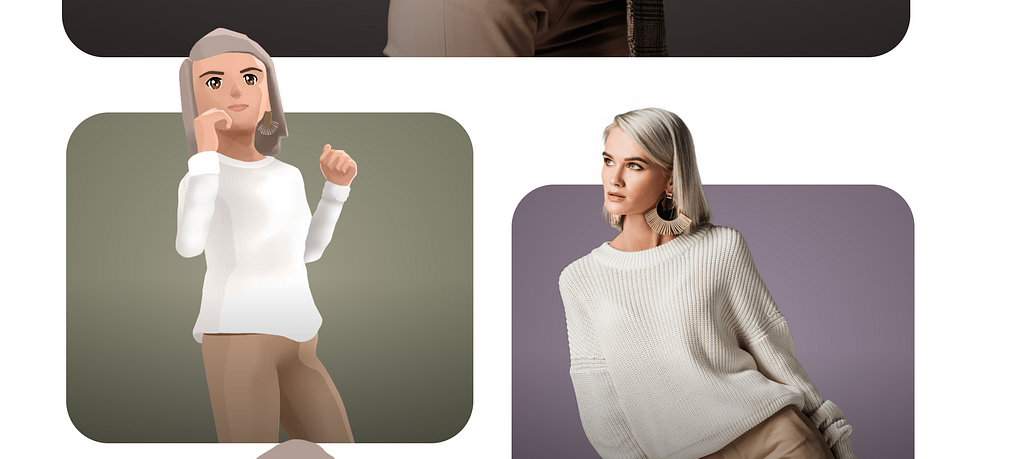We’re going to start with The Canned-Food Phenomenon. Yeah I made that up. But bear with me.
When processed, preserved, canned food first came into existence — it served a necessity: to feed soldiers in the war. Then it was commoditized and rolled out to society for time and convenience. Soon after, we opened the Pandora’s Box of preserved food — tuna salad suspended in gelatine. Relish and mayonnaise mixed with lime Jell-O. You name it — people concocted it. If you don’t believe me, check out this recreation of the most gruesome recipes (like the mustard ring pictured below).

Anyways, humanity soon came to realize that maybe everything didn’t need to be suspended in gelatine, or served out of a can. The sensation soon wore off, moving us into the Purpose Built Era featuring things like baked beans, canned tuna — preserved food that answered the call of time, convenience and preservation in a more needs-based fashion.
And now, in this decade, we see an introduction of high-brow canned goods, meant to be an addition to a great meal — organic PEI mussels, Extreme Beans, those buttery green olives. We’re in The Craft Era.

Technology follows this same pattern — and when it comes to the Metaverse, we’re suspending tuna in Jell-O right now. Some of us are embracing it, diving in and revelling in the concoction, while others look on grimacing with disbelief that there is any value here at all.
At this moment, all I can do is cringe at the current, clumsy state of the Metaverse, while understanding that it’s a necessary step in the evolution. The purpose-built era comes with promise and we might as well start looking ahead. So here are a few questions I’m asking as we wade through this Jell-O ladened Phenom Era.
Why is it that every time someone is asked “What is the Metaverse?” they tell you what it’s not?
Only a few weeks ago, my search history contained phrases like “what is the Metaverse?” “how do you get into the Metaverse” “who owns the Metaverse” — yeah I’m new here, I’ll own it.
If you’ve done any of the same googling that I have, you’ll notice whenever someone is asked “What is the Metaverse?” they respond with “Well, let me tell you what it isn’t” and then dive into a long-winded explanation of what the Metaverse is not, which incidentally, is not all that helpful.
But there are a few who stand out, brave enough to share a concrete definition. Kristin Houser at freethink is one of those brave souls:
While Web 3.0 is mainly about who will own and control tomorrow’s internet, the metaverse centers on how users will experience the internet of the future.
Okay cool — but now what is Web 3.0?
For those of you who grew up with the book “If You Give a Mouse a Cookie”, your journey through Metaverse education may feel a lot like that book. You’ll be gifted with a definition only to ask for more. (Side note, I recently learned that the author wrote that book as a political statement to critique public welfare…)
Anyways — atrocious misuse of Children’s literature aside, let’s dive into Web3. Cathy Hackl, deemed the Godmother of the Metaverse offered up a perfect definition on Bloomberg’s Into the Metaverse podcast:
- Web 1 connected information (Netscape, Yahoo)
- Web 2 connected people (Airbnb, Instagram, Uber)
- Web 3 connects people, places and things (Decentraland, ethereum, NFTs)
Connecting people, places and things, eh? So, what does that actually look like?
That’s where it gets tricky. It can look like almost anything in the form of products, services, places and experiences. From a Gucci handbag being sold for more than its physical counterpart, to Snoop Dogg’s $450k land purchase, or dancing in virtual night clubs — its a bit of a dizzying world right now.
From avatars, new worlds, and digital assets and beyond, the Metaverse is pretty much anything we can dream up right now.
But one question that keeps bubbling to the surface for me: Why aren’t we dreaming bigger?
Metaverse Fashion Week is a perfect example of this. In a world where we can change our look infinite times, where we can create any garment or accessory we could possibly dream of — why would we showcase a white knit sweater with khaki pants on the homepage of this event.
I want face tattoos, cloaks, halos, iridescent hair — not an avatar styled like a 2006 Nintendo Mii Character.

I totally get that our dreams are limited by the limitations of technology, but couldn’t we at least push the boundaries on what we look like to sow the seeds of possibility, not perpetuate a single view of the human body?
I want avatars with different shapes and sizes of bodies. I want to be able to change things about myself that I can’t in real life. Or maybe I want my avatar to look exactly like me. Eyes that are a little closer together, hair that’s a little frizzy, thick-framed glasses. And then I want to change it all. Blue skin like James Cameron’s Avatar’s one day — 6ft legs the next.
To those working in the avatar space, this Ralph Lauren quote seems to fit:
“I don’t design clothes. I design dreams.”
Next question — Why are we duplicating the things we don’t like about real life?
Gravity. Land size. Inequitable ownership. Skyscrapers. Line ups. The list goes on. We’ve created a world where we can be anything, wear anything, create anything — and we’ve created the same things we’re all trying to escape in our real lives.
Attending a conference a few weeks ago, someone spoke about the future of city planners and the implication of the Metaverse on their roles in both physical and digital environments. The speaker went on to talk about how to build and plan things like for roads, buildings, and public spaces, which sounded really interesting. And then, it rolled right out of their mouth “and of course, we’ll have to plan for traffic too!”
In a world that you can create and dream up almost anything, why on earth would you dream up traffic? Let’s find all of the things that we find unbearable in real life and create a reprieve in the Metaverse, not additional burden.
When sharing this question with friends, one pointed out that a world without friction is a world without personal growth and perhaps deep down we know this, which is why we can’t imagine a world without it. Maybe they’re right.
Speaking of friction, how do we move out of this uncomfortable phase into the Purpose Built Era?
The Purpose Built Era is born out of discomfort, restlessness and our innate drive to always ask for more. We will get ourselves to the Purpose Built Era in due time, but as designers, innovators, and leaders — we can start accelerating this shift by asking the right questions. Instead of asking “How do we get into the Metaverse?” start asking:
- What do my customers and employees need right now? How might the Metaverse help solve these needs in new and impactful ways?
- What are the outcomes we’re looking to achieve this year? How might the Metaverse help us reach these goals?
- When it comes to the planet and our community, what are we focusing on? How might the Metaverse help us reach our goals?
- What impact are we looking to have and how will we measure this?
Focus on strategic, needs-based innovation — and please, please, pleeeeease steer clear of tech-for-tech-sakes initiatives.
Stay tuned!
Next week I’ll be exploring some purpose-built examples, and look ahead at the trends we might start to see. With that, I’ll leave you with this:
The true sign of intelligence is not knowledge but imagination. — Albert Einstein
Metaverse, you’re cringe (right now) was originally published in UX Collective on Medium, where people are continuing the conversation by highlighting and responding to this story.